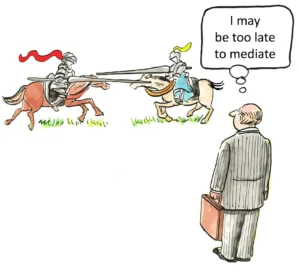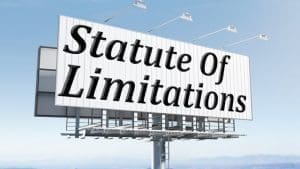Visa Application Guide: Navigating Immigration Processes
The visa application process is a critical component of international travel and immigration, requiring careful attention to detail and a thorough understanding of complex legal requirements. As global mobility continues to increase, navigating the intricacies of visa applications has become an essential skill for travelers, students, workers, and immigrants alike. This comprehensive guide aims to provide a detailed overview of the visa application process, offering insights into common pitfalls, strategies for success, and recent developments in immigration policies that may impact applicants.
At its core, a visa serves as an official endorsement on a passport, indicating that the holder is permitted to enter, leave, or stay in a country for a specified period. The type of visa required depends on the purpose of travel, duration of stay, and the specific regulations of the destination country. For instance, the United States offers a wide array of visa categories, including nonimmigrant visas for temporary stays and immigrant visas for those seeking permanent residency.
The first step in the visa application process is determining the appropriate visa category. For travel to the United States, common nonimmigrant visa types include the B-1 visa for business visitors, B-2 visa for tourists, F-1 visa for students, and various categories of work visas such as the H-1B for specialty occupations. Each visa type has its own set of eligibility criteria and application requirements, making it crucial for applicants to carefully research and select the most suitable option for their circumstances.
Once the appropriate visa category is identified, the next step typically involves completing the necessary application forms. For U.S. nonimmigrant visas, this usually means filling out the DS-160 form online. This comprehensive form requires detailed personal information, travel history, and the purpose of the intended visit. Accuracy and consistency in providing this information are paramount, as discrepancies or omissions can lead to delays or denials in the application process.
After submitting the application form, applicants are generally required to pay a visa application fee. The fee amount varies depending on the visa type and the applicant’s country of origin. It’s important to note that these fees are typically non-refundable, regardless of the application outcome. Therefore, ensuring that all requirements are met before submitting the application and paying the fee is crucial to avoid unnecessary expenses.
One of the most critical stages in the visa application process is the visa interview. For many visa categories, applicants are required to attend an in-person interview at a U.S. embassy or consulate. This interview serves as an opportunity for consular officers to assess the applicant’s eligibility and intentions. Preparation for the visa interview is key to success. Applicants should be prepared to articulate clearly the purpose of their trip, demonstrate strong ties to their home country (to show intent to return), and provide any additional documentation that supports their application.
Documentation plays a vital role in the visa application process. Common required documents include a valid passport, photographs meeting specific requirements, proof of financial ability to support oneself during the stay, and documents relevant to the purpose of the trip (such as admission letters for students or job offers for work visas). For some visa categories, additional documents like police clearance certificates or medical examination reports may be necessary. Ensuring that all required documents are complete, accurate, and up-to-date is crucial for a smooth application process.
One common pitfall in visa applications is providing inconsistent or inaccurate information. This can occur when details provided in the application form do not match those in supporting documents or when applicants give conflicting information during the interview. Such discrepancies, even if unintentional, can raise red flags and lead to visa denials. To avoid this, applicants should carefully review all information before submission and maintain consistency across all aspects of their application.
Another critical aspect of the visa application process is timing. Many applicants underestimate the time required for visa processing, which can vary significantly depending on the visa type, the applicant’s nationality, and the current workload of the processing center. It’s generally advisable to begin the application process well in advance of the intended travel date. For some visa categories, like the H-1B for specialty occupations, there are specific filing periods and annual caps, making timely application even more crucial.
The visa application landscape is continually evolving, with changes in policies and procedures often reflecting broader geopolitical and economic trends. For instance, recent years have seen significant changes in the H-1B visa program, including modifications to the selection process and increased scrutiny of applications. In 2024, the United States Citizenship and Immigration Services (USCIS) implemented a new beneficiary-centric selection process for H-1B registrations, aimed at reducing the number of duplicate registrations and creating a more equitable selection system.
Another trend in visa processing is the increasing use of technology to streamline applications and enhance security. Many countries, including the United States, have implemented electronic visa application systems and are exploring the use of biometric data to verify applicants’ identities. These technological advancements aim to make the process more efficient while also bolstering security measures.
The COVID-19 pandemic has had a profound impact on visa processing and international travel. Many countries implemented travel restrictions and temporary changes to visa policies in response to the global health crisis. As the world continues to navigate the aftermath of the pandemic, visa applicants should stay informed about any ongoing restrictions or policy changes that may affect their travel plans.
For those seeking to immigrate permanently to the United States, the process becomes even more complex. Immigrant visas are typically categorized into family-sponsored, employment-based, and diversity visas. The family-sponsored category allows U.S. citizens and lawful permanent residents to petition for certain family members to immigrate. Employment-based immigrant visas are available for workers with specific skills or qualifications, while the diversity visa program aims to increase immigration from countries with historically low rates of immigration to the United States.
The immigrant visa process often begins with the filing of a petition by a sponsor (such as a family member or employer) with USCIS. Once the petition is approved, and a visa becomes available (which can take years for some categories due to annual numerical limits), the applicant can proceed with the visa application. This process includes submitting various forms, attending a medical examination, and participating in an interview at a U.S. embassy or consulate.
One of the most challenging aspects of the immigrant visa process is the often lengthy waiting periods, particularly for family-sponsored and certain employment-based categories. These waiting periods are determined by visa availability, which is published monthly in the Visa Bulletin issued by the U.S. Department of State. Understanding how to read and interpret the Visa Bulletin is crucial for immigrants waiting to proceed with their applications.
For those already in the United States on a nonimmigrant visa, there may be opportunities to adjust status to that of a lawful permanent resident without leaving the country. This process, known as Adjustment of Status, allows eligible individuals to apply for a Green Card while remaining in the U.S. However, not all nonimmigrant visa holders are eligible for adjustment of status, and the process has its own set of complex requirements and procedures.
The legal landscape surrounding immigration and visa applications is constantly evolving, influenced by political, economic, and social factors. Recent years have seen numerous policy changes and legal challenges that have impacted various aspects of the visa application process. For instance, the implementation and subsequent rescission of travel bans, changes to public charge rules, and modifications to work visa programs have all had significant effects on visa applicants and immigration patterns.
One area of ongoing debate and potential reform is the H-1B visa program for specialty occupations. Critics argue that the program is subject to abuse and can disadvantage American workers, while proponents emphasize its importance in attracting global talent to the U.S. economy. Recent changes to the H-1B selection process, including the shift to a beneficiary-centric model and increased scrutiny of applications, reflect attempts to address these concerns while maintaining the program’s core objectives.
Another trend in visa and immigration policy is the growing emphasis on merit-based immigration systems. Some policymakers advocate for reforms that would prioritize skills, education, and potential economic contributions in the selection of immigrants. This approach contrasts with the current system, which places significant emphasis on family reunification. The debate over the balance between family-based and merit-based immigration continues to shape policy discussions and may influence future changes to visa categories and eligibility criteria.
The intersection of immigration policy and national security remains a critical consideration in visa processing. Enhanced vetting procedures, implemented in response to security concerns, can lead to longer processing times and increased scrutiny of certain visa applications. Applicants from countries deemed to be of higher risk may face additional challenges or delays in the visa application process.
For students and scholars, changes to visa policies can have significant implications for academic pursuits and research opportunities. The F-1 student visa and J-1 exchange visitor programs have been subject to various policy changes in recent years, including modifications to the duration of status rules and increased oversight of academic programs. These changes reflect broader debates about the role of international students in the U.S. education system and workforce.
The rise of remote work and digital nomadism has also begun to influence visa policies around the world. Some countries have introduced new visa categories specifically designed for remote workers or digital nomads, recognizing the changing nature of work in the global economy. While the United States has not yet implemented a specific visa for this purpose, the trend highlights the need for immigration systems to adapt to evolving work patterns and technological advancements.
Environmental factors and climate change are emerging as considerations in immigration policy and visa processing. The concept of climate refugees – individuals displaced by environmental disasters or long-term climate changes – is gaining attention in international policy discussions. While current U.S. immigration law does not specifically address climate-related displacement, this issue may influence future visa categories or humanitarian programs.
The role of artificial intelligence and machine learning in visa processing is an area of growing interest and potential. These technologies could potentially streamline application reviews, detect fraud more effectively, and improve the overall efficiency of the visa system. However, the use of AI in immigration decisions also raises important ethical and legal questions about fairness, transparency, and the potential for bias in automated systems.
For visa applicants, understanding and navigating these complex and evolving systems can be challenging. Seeking professional assistance from qualified immigration attorneys or accredited representatives can be invaluable, especially for complex cases or when facing obstacles in the application process. These professionals can provide guidance on eligibility, assist with document preparation, and offer strategies for addressing potential issues.
It’s also crucial for applicants to be aware of the risks of visa fraud and misrepresentation. Providing false information or documents in a visa application is a serious offense that can result in permanent ineligibility for U.S. visas. Applicants should be wary of individuals or organizations promising guaranteed visa approvals or offering to provide false documentation. Only information and assistance from official government sources or accredited professionals should be trusted.
The visa application process also intersects with broader issues of immigrant rights and integration. For those who successfully obtain visas and enter the United States, understanding their rights and responsibilities is crucial. This includes awareness of labor laws for work visa holders, educational rights for students, and pathways to further immigration benefits or citizenship for those on immigrant visas.
As global mobility continues to increase and the nature of work and travel evolves, the visa application process is likely to undergo further changes and adaptations. Staying informed about policy updates, understanding the nuances of different visa categories, and carefully preparing applications will remain essential for those seeking to navigate the complex world of immigration and international travel.
In conclusion, the visa application process is a multifaceted journey that requires careful planning, attention to detail, and an understanding of complex legal requirements. By thoroughly researching visa options, meticulously preparing applications, and staying informed about policy changes, applicants can improve their chances of success in obtaining the necessary visas for their travel or immigration goals. As the global landscape continues to evolve, the ability to navigate these processes effectively will remain a valuable skill for individuals seeking to cross borders for work, study, or personal reasons.
Website citations:
- https://travel.state.gov/content/travel/en/us-visas/visa-information-resources/all-visa-categories.html
- https://www.uscis.gov/working-in-the-united-states
- https://travel.state.gov/content/travel/en/us-visas/immigrate/the-immigrant-visa-process/step-1-submit-a-petition.html
- https://www.americanimmigrationcouncil.org/research/h1b-visa-program-fact-sheet
- https://www.uscis.gov/working-in-the-united-states/temporary-workers/h-1b-specialty-occupations/h-1b-electronic-registration-process
- https://travel.state.gov/content/travel/en/legal/visa-law0/visa-bulletin/2024/visa-bulletin-for-april-2024.html
- https://www.uscis.gov/green-card/how-to-apply-for-a-green-card


















